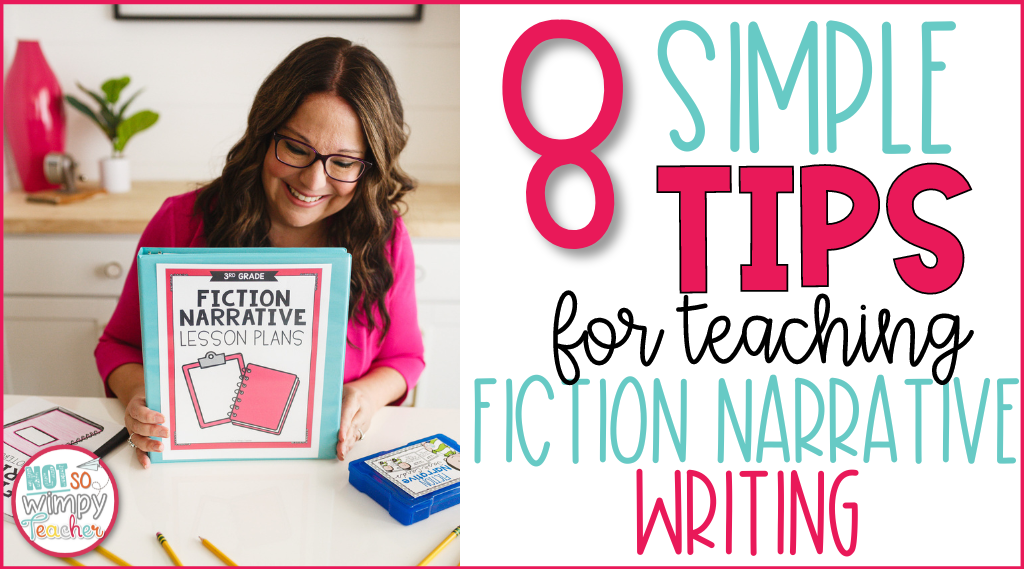
I loved to teach fiction narrative writing at the end of the year. Students are always excited to finally get the chance to make up their own stories and they find fiction narratives fun to write. It’s so easy to engage kids in fiction writing, even when they are otherwise distracted by sunny skies, so this is a great unit to teach after testing.
Another great reason to teach fiction narrative writing in quarter four is that it reviews many previously taught skills. Your students will have already been introduced to crucial elements of fiction like interesting leads, details, and dialogue. They’ll have had lots of practice brainstorming topics and generating ideas, and they will at least have a basic understanding of paragraphs, transitions, and editing.
With those skills already established, they will be able to exercise more creativity. Plus, it’s so much fun to see how much they’ve grown over the course of the year.
Here are 8 simple tips to make teaching fiction narrative writing easy and fun.
Start with a pre-assessment
No matter what genre you are teaching, I always recommend starting with a pre-assessment. This is just as true at the end of the year as it is at the beginning.
I recommend giving students a simple writing prompt (be careful to choose something that everyone has experience with) and one writing period to plan, draft, revise, and edit their fiction piece.
Encourage them to do their best work, but not to worry about it. You can also tell them that their story should include characters, a setting, a problem, and a solution.
You can use a simple rubric to score the sample but don’t add the grade to the grade book. Remember, you haven’t taught these skills yet. It’s normal for some kids to finish quickly and/or not write very much. Other students will likely fill pages, especially when given the freedom to be creative. Both are completely normal responses.
The purpose of the pre-assessment is to help you see what your students know before teaching the unit. It will allow you to plan your lessons efficiently. You can also use this information to set up your conference groups. Finally, the pre-assessment gives you a baseline against which you can measure growth at the end of the units.
Read a mentor text
Most students are familiar with fiction. They have been reading (or listening to) stories at least since starting school. But just because they have been enjoying fiction, does not mean they understand what it is. So I always begin with a mentor text.
After you finish the story, ask students questions about the setting, the characters, the problem, and the solution. Make it clear that all fiction stories have these elements.
You can use mentor texts throughout the fiction unit as you explore each of these elements in greater detail. If you are using my writing units, I have pre-selected stories that showcase these elements and included them in the resource.
Explain the difference between personal narrative and fiction narrative writing
Depending on when you are teaching fiction writing, some students may already be familiar with personal narratives. But it’s easy to confuse the two.
The key difference is that personal narratives are true stories. That makes them nonfiction. Personal narratives recount things that really happened.
Fiction narratives are made-up stories. The events in the story did not actually happen.
Fiction can be realistic (a story that could happen) or unrealistic (a story that could not happen). This is also called fantasy.
Both realistic and unrealistic fiction have the same elements: characters, a setting, a problem, and a solution. The difference is how those elements are used. Sometimes it helps to provide examples of unrealistic fiction for your students: talking animals, magic, time travel, etc.
Introduce the problem and solution

The problem
Explain to students that all fiction writing must have a problem to make the story interesting.
A problem is a challenge or a situation that the characters face in the story. A story about a girl who goes for a walk on a warm spring day is probably not very interesting. But a story about a girl who follows a bunny rabbit into the woods and gets lost in the forest is a lot more exciting.
Help students brainstorm possible problems for their characters. Assure them that they don’t have to worry about a solution yet. They can be creative with their problems.
Problems make stories interesting to read, but solutions make them satisfying. If the characters are not able to solve their challenges or get themselves out of a sticky situation, readers will be disappointed.
The solution
Help students understand that every fiction story needs a problem and a solution.
In the example above, if the little girl was unable to find her way out of the forest it would be a very sad and disappointing story indeed.
Help students prepare for the ending of their story by brainstorming possible solutions.
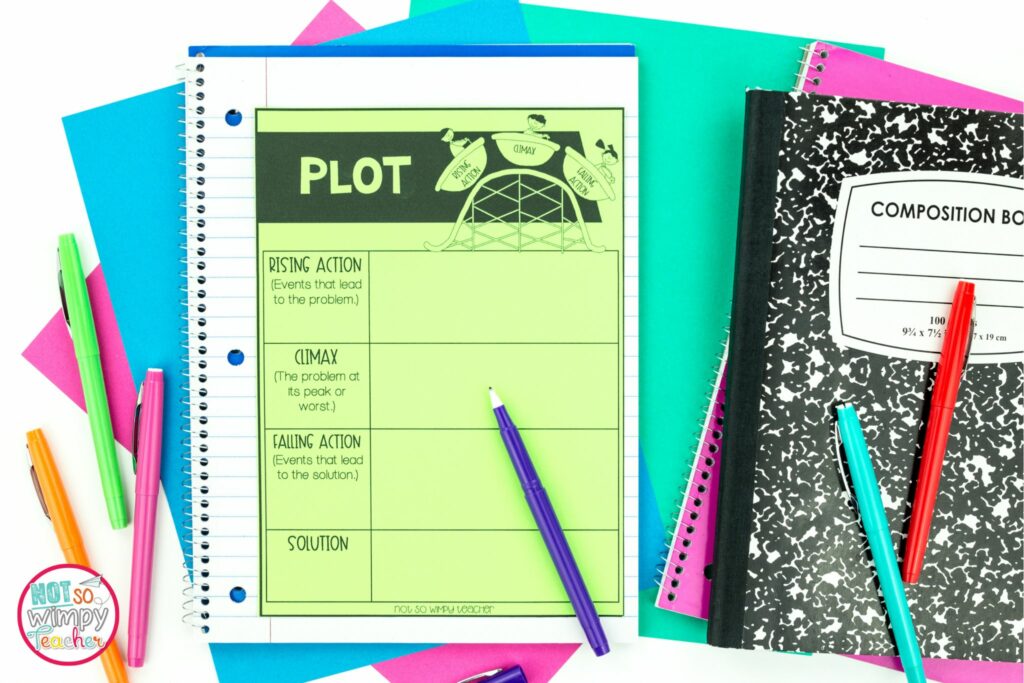
Develop characters and setting
The other two key elements of fiction writing are characters and setting.
Characters
You can help students develop interesting characters by probing them to think about things like:
- Who are the characters?
- Are they human? Animals? Aliens? Wizards? Etc . . .
- What is their name?
- How old are they?
- What do they look like?
- Likes and dislikes?
- What are their character traits?
- What do they want?
Students don’t necessarily have to answer all of these questions, but considering them will help create interesting characters.
Setting
Readers want to be able to visualize a story. This helps them feel like they are part of it and immerses them in the character’s world.
Help your students develop their setting by thinking about when and where the story takes place. Many stories have additional scenes, so be sure to encourage students to think about different locations in their story.
The use of descriptive details will help make a setting come to life for readers.
Write first, then revise
I believe the key to keeping students engaged in writing is to let them write right away. As soon as you introduce a new skill or concept, give them time to practice it.
Some teachers think you have to wait until you’ve taught everything students need to know about fiction writing to let them start writing. But that’s not true.

First of all, it’s not possible. Even authors don’t know everything there is to know about fiction writing. They are always learning. There’s no way a group of eight-year-olds is going to master it all in one go.
Second, if you don’t let kids write right away, they are going to get bored. They are going to be itching to use their new skills and get tired of waiting. They might even start to lose interest in new lessons as they think about the story they want to write.
Finally, if you don’t give students the opportunity to practice their new fiction writing skills right away, they will forget them. The best way to learn a new skill is to use it right away. That’s why I always recommend jumping right into the first draft.
Students will have ample opportunities to go back and revise that first draft as you teach new lessons. For example, you might teach an initial lesson on “the problem,” and after you brainstorm some possible problems together, direct students will come up with a problem for their story.
They might write two or three different problems and then select their favorite one to use for the story. This allows them to practice the skill right away and have fun writing.
Later, when you teach lessons on creating suspense or using strong verbs, they can revisit their problem and use newly acquired skills to improve it.
Even professional writers are encouraged to get the first draft down on paper quickly. There is always time to go back and revise later.
Edit slowly
We want kids to draft quickly, but we want them to edit slowly. It’s extremely helpful to break down the editing process into a series of very specific steps.
If you just tell students to edit their work, chances are they will spend two minutes skimming it and tell you it’s good. You, on the other hand, will see ten cringe-worthy mistakes in two seconds.
Rather than just telling students to edit, break down the process into simple steps and have them focus on one specific item at a time.
One day you can focus on making sure all sentences start with a capital letter. The next day you can focus on ending punctuation. Maybe you want to look closely at dialogue punctuation or focus on correct spelling.
You can choose any skill you want to emphasize but don’t expect them to edit everything all at once.
And this might be the hardest part: once they are finished editing, resist the urge to point out all the other mistakes. No one wants to see a story they are proud of covered in red ink.
Remember, your writers are children. They are just learning all of these skills and conventions. They will have many more years of schooling to continue to hone their editing skills. Plus, the primary purpose of writing is communicating ideas, not perfecting spelling or grammar.
Need more ideas for helping students revise and edit their writing? Check out this post: The Secret to Getting Students to Revise and Edit.
Celebrate writing!
This is my favorite part of any writing unit! I love to celebrate success!
After students finish their fiction narrative masterpieces, find a fun way to publish them. You can let students write their final copy on fancy publishing paper. Or maybe you can combine everyone’s story into a class book.
Some students love to type their finished stories.
Make time for students to share their stories with one another. Real authors write so they can share their stories with others. Students really enjoy the opportunity to share their writing.
One easy idea is to host an author tea. You can bring in iced tea (or juice) and some cookies and enjoy a treat while kids read their fiction writing in small groups.
Another fun (and easy) idea is to “read to a buddy.” This works well if your class has little or big buddies. You could also team up with another grade level teacher.
You can also invite your students to bring in a stuffed buddy from home. Teddy bears are great listeners.
Fiction Narrative Writing Units
If you like these tips for teaching fiction writing, then you are going to love my fiction narrative writing units!
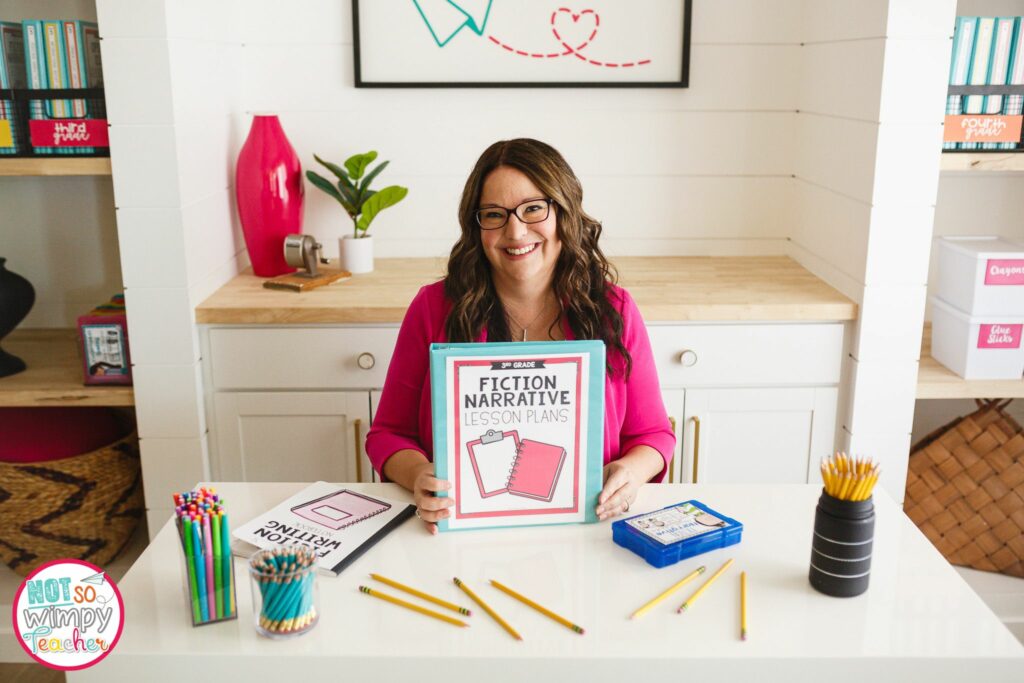
These units are available for grades 2-5 and come with EVERYTHING you need to teach fiction narrative writing for 8 weeks. I’ve even included all the mentor texts you need. You don’t have to purchase any additional books or spend hours hunting in the library!
The lesson plans are simple. All you have to do is print and teach.
Students will learn all of the skills necessary to write a fiction narrative: how to craft a problem and solution, develop characters and settings, write and punctuate dialogue, add details, and more. Check out everything that is included:
- Daily lesson plans
- Mentor texts
- Digital anchor charts (fill them in together or use the completed versions)
- Student printables
- Task cards
- Daily writing tasks
- Rubrics
- And more!
Finally, these units make fiction narrative writing fun for your students. You may even find that your students beg for more writing time. And when students enjoy writing and get lots of practice, they perform better on standardized tests.
Shop This Post
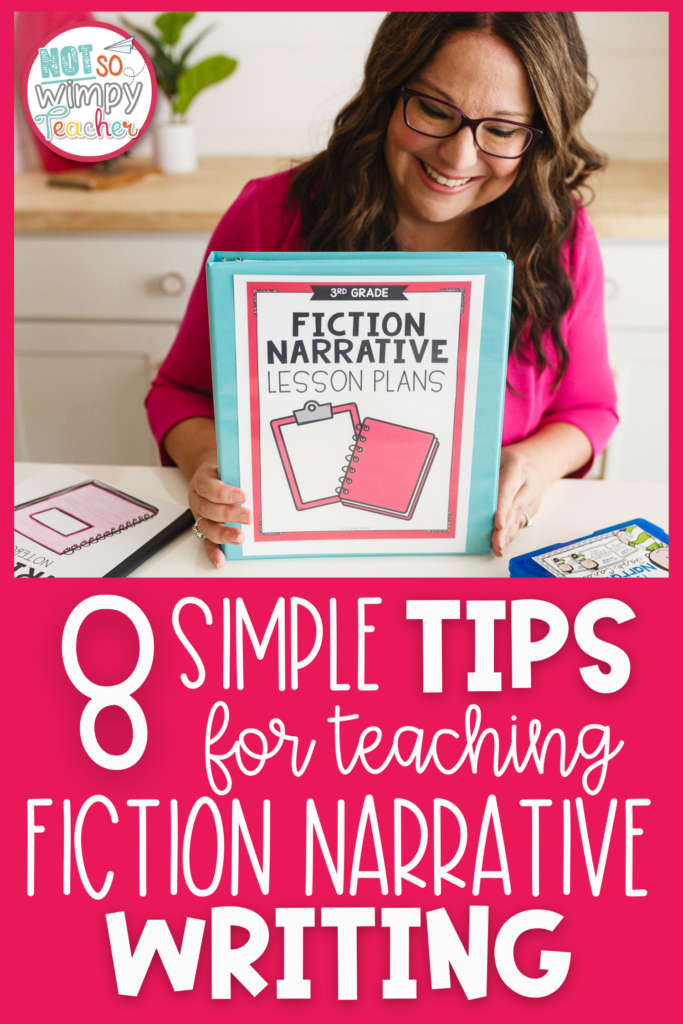
Have a Not So Wimpy Day,


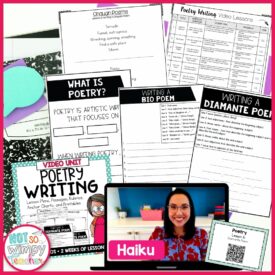








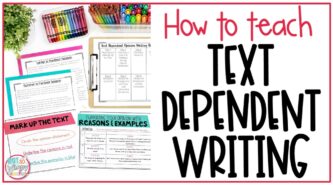
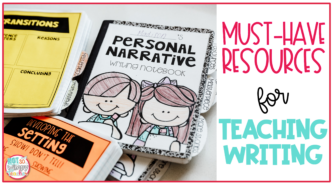











 End of Year Carnival Week for grades 2-5!
End of Year Carnival Week for grades 2-5!
The distinction between personal and fiction narratives is also crucial, and your explanation makes it clear and easy for students to understand geometry dash world
The emphasis on starting with a pre-assessment to gauge students’ existing skills is a great way to tailor instruction effectively bitlife. Incorporating mentor texts to illustrate story elements like setting, characters, and plot provides students with clear examples to emulate.